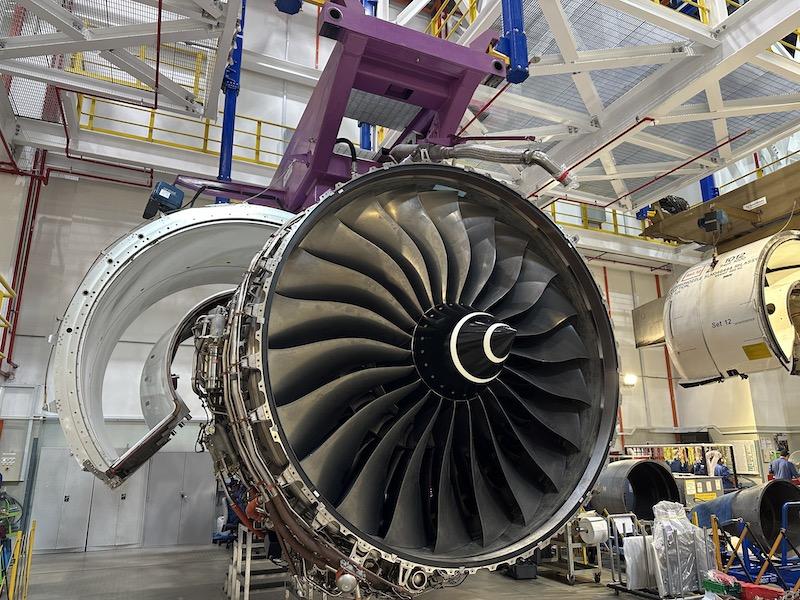
A Trent XWB at SAESL in Singapore.
SINGAPORE—Singapore Aero Engine Services Private Ltd. (SAESL) plans to transform its Rolls-Royce Trent engine service center by adding about 40% more capacity.
The engine MRO, a joint venture between Rolls-Royce and Singapore Airlines Engineering Co., plans to invest $180 million in two facilities that total 45,000 m2 (484,376 ft.2).
One part involves taking occupancy of Rolls-Royce’s former engine assembly and test cell facility at Seletar, which the OEM stopped using during the COVID-19 pandemic because it relocated those operations to the UK. SAESL also plans to build a 28,000-m2 logistics facility at its current compound near Singapore Changi Airport to consolidate its supply chain management and logistics activities.
SAESL is also revamping its core IT systems and processes simultaneously to drive innovation and efficiencies.
Consolidating supply chain management, kitting and work-in-progress activities should make processes more efficient and free up space in the existing area. It should also “drive a step-change of systems that goes with it,” SAESL CEO Simon Middlebrough says.
The investment includes “a new [enterprise resource planning, ERP], new [manufacturing execution system, MES], new supply chain management system, fully integrated warehouse management, as well as the physical expansion and the recruitment of 500 people,” Middlebrough says.
SAESL intends to down-select the MES in the fourth quarter. It is in the process of running proof-of-concepts, which should conclude in November, with two vendors. It started by evaluating nine MES systems.
The ERP most likely will be SAP S/4 Hana.
“But the most exciting stuff is what you can do with MES. It makes a step-change in the way that you manage engineering,” from interacting with the technical data and Rolls-Royce manuals. “This will be a game changer in capability and productivity in engineering,” he says.
SAESL plans to implement the MES and ERP systems in 2025-26.
The system functionality is “what our engineers are crying out for in terms of getting proper digital solutions at point of use,” Middlebrough says. The new streamlined system should enable technicians to work more efficiently and provide a better use experience.
For the facility expansions, SAESL is working on the land approvals, registries and lease arrangements, as well as placing orders for long lead-time purchase orders.
SAESL maintains about 300 Trent engines annually, which will grow to 400-420 after the changes. From the additional space, you might expect more, but Middlebrough points out that the engine fleet will be aging, so the shop will execute fewer hospital visits and will perform more refurbishments, which take longer.





